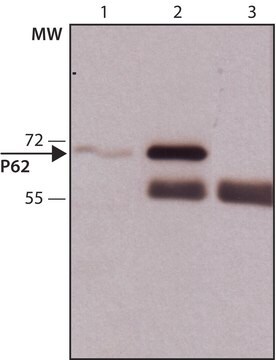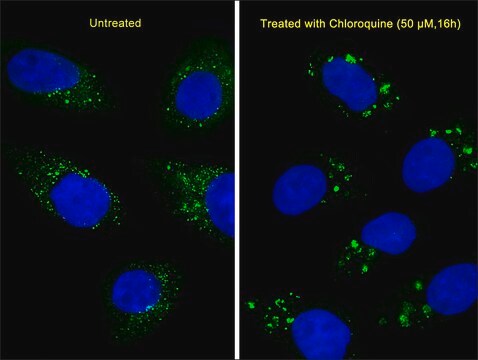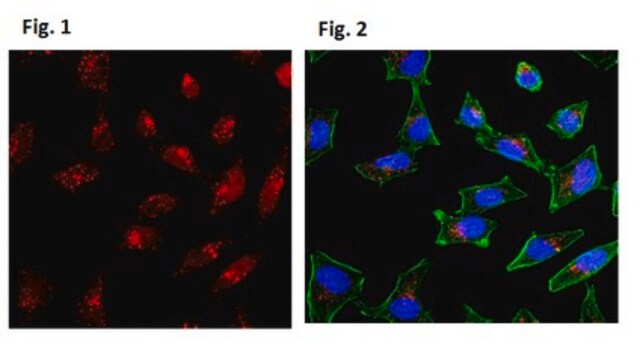SAB4200822
Anti-LC3C antibody produced in rabbit

affinity isolated antibody, buffered aqueous solution
Sinónimos:
Autophagy-related protein LC3 C, Autophagy-related ubiquitin-like modifier LC3 C, MAP1 light chain 3-like protein 3, MAP1A/MAP1B LC3 C, MAP1A/MAP1B light chain 3 C, Microtubule-associated protein 1 light chain 3 gamma, Microtubule-associated proteins 1A/1B light chain 3C
About This Item
Productos recomendados
origen biológico
rabbit
forma del anticuerpo
affinity isolated antibody
tipo de anticuerpo
primary antibodies
clon
polyclonal
Formulario
buffered aqueous solution
mol peso
~16/18 kDa
reactividad de especies
human
envase
antibody small pack of 25 μL
validación mejorada
recombinant expression
Learn more about Antibody Enhanced Validation
concentración
~1 mg/mL
técnicas
immunoblotting: 1:2000-1:4000 using HEK-293T cells overexpressing human LC3C.
immunofluorescence: 1:400-1:800 using human HeLa cells treated with Bafilomycin A1
Nº de acceso UniProt
Condiciones de envío
dry ice
temp. de almacenamiento
−20°C
modificación del objetivo postraduccional
unmodified
Información sobre el gen
human ... MAP1LC3C(440738)
Descripción general
Especificidad
Inmunógeno
Aplicación
Acciones bioquímicas o fisiológicas
Forma física
Almacenamiento y estabilidad
Cláusula de descargo de responsabilidad
¿No encuentra el producto adecuado?
Pruebe nuestro Herramienta de selección de productos.
Código de clase de almacenamiento
10 - Combustible liquids
Clase de riesgo para el agua (WGK)
WGK 1
Punto de inflamabilidad (°F)
Not applicable
Punto de inflamabilidad (°C)
Not applicable
Elija entre una de las versiones más recientes:
Certificados de análisis (COA)
¿No ve la versión correcta?
Si necesita una versión concreta, puede buscar un certificado específico por el número de lote.
¿Ya tiene este producto?
Encuentre la documentación para los productos que ha comprado recientemente en la Biblioteca de documentos.
Nuestro equipo de científicos tiene experiencia en todas las áreas de investigación: Ciencias de la vida, Ciencia de los materiales, Síntesis química, Cromatografía, Analítica y muchas otras.
Póngase en contacto con el Servicio técnico





